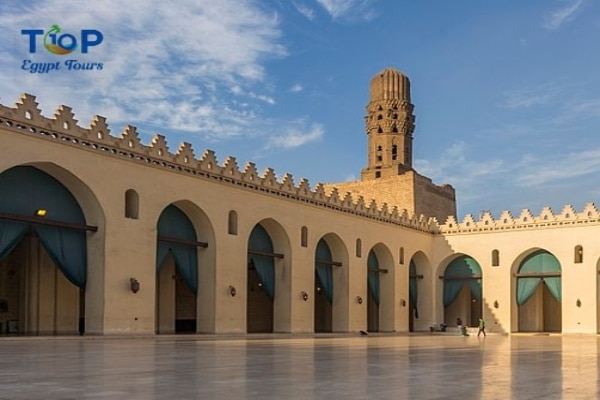Al-Hakim Bi-Amr Allah, Welcome to a journey through the annals of history as we unravel the mystery surrounding Al-Hakim Bi-Amr Allah, the mad Caliph of Egypt. The ruler stands in the fabric of Egypt’s rulers as a unique personality, and his reign was characterized by a strangeness that astonished and puzzled historians.
In this article, we will uncover for you the Al-Hakim Bi-Amr Allah with Top Ten Egypt.
1. Al-Hakim Bi-Amr Allah Early life and rise to power:
Al-Hakim Bi-Amr Allah, born in 985, assumed the throne as the sixth Fatimid caliph at a young age. His early life was shaped by the complex political landscape of the time, and his rise to power marked the beginning of a rule that will be remembered for its unconventional nature. His father’s men, such as Al-Barghun and Al-Hasan bin Amara, took over the management of his affairs and carried out their mission to perfection. When the ruler helped a lot, he killed them so that no one would share his rule.
2. The Fatimid Caliphate:
To understand the ruler’s rule, it is necessary to understand the background of the Fatimid Caliphate. Founded in 909, the Fatimids brought a unique blend of Shiite Islam to Egypt, creating a culturally diverse and intellectually vibrant society that paved the way for the ruler’s rule.
3. The rule of the strange ruler Al-Hakim Bi-Amr Allah:
The ruler’s reign was not ordinary at all. His eccentricities included the controversial decision to destroy religious structures, including churches, synagogues and even mosques that were deemed heretical. Although these actions confused many, they highlighted the complexity of his rule. The ruler’s personality was contradictory and contradictory, and he was very colorful in his actions, rulings, and words. Therefore, his reign was characterized by eccentricities, which was represented by his issuance of many strange laws, such as prohibiting eating molokhiya, and ordering people to work at night and sleep during the day.
The ruler was famous for his ease in shedding blood, and some historians estimated the number of his kills at about eighteen thousand people. He always killed his ministers, and killed them with the most horrific murderers. He appoints one of them according to his position, then kills him, and appoints another. Only a short period passes without the new appointee drowning in his own blood, and countless scholars, writers, and notables are killed.
4. Administrative reforms:
Amidst this strangeness, Al-Hakim carried out remarkable administrative and economic reforms. These changes left a lasting impact on governance and infrastructure, providing a nuanced perspective on a ruler often distinguished by his unorthodox decisions. Al-Hakim Mosque, also known as Al-Hakim Mosque, is one of the most important historical Islamic monuments in Cairo, Egypt.
5. The secret of the ruler’s disappearance:
In 1021, the ruler disappeared, leaving behind a mystery that fueled speculation for centuries. Theories abound regarding his fate, from assassination to deliberate isolation. The disappearance of the Mad Caliph remains one of history’s greatest unsolved mysteries.
Al-Hakim Bi-Amr Allah, the mad caliph of Egypt, defies easy classification. His reign, marked by eccentricities and reforms, continues to captivate those who seek to unravel the layers of history. As we move through the remains of his time, we invite you to explore the intriguing tapestry of Egypt’s rulers, each thread contributing to the rich and diverse narrative of this ancient land.



Comment (0)